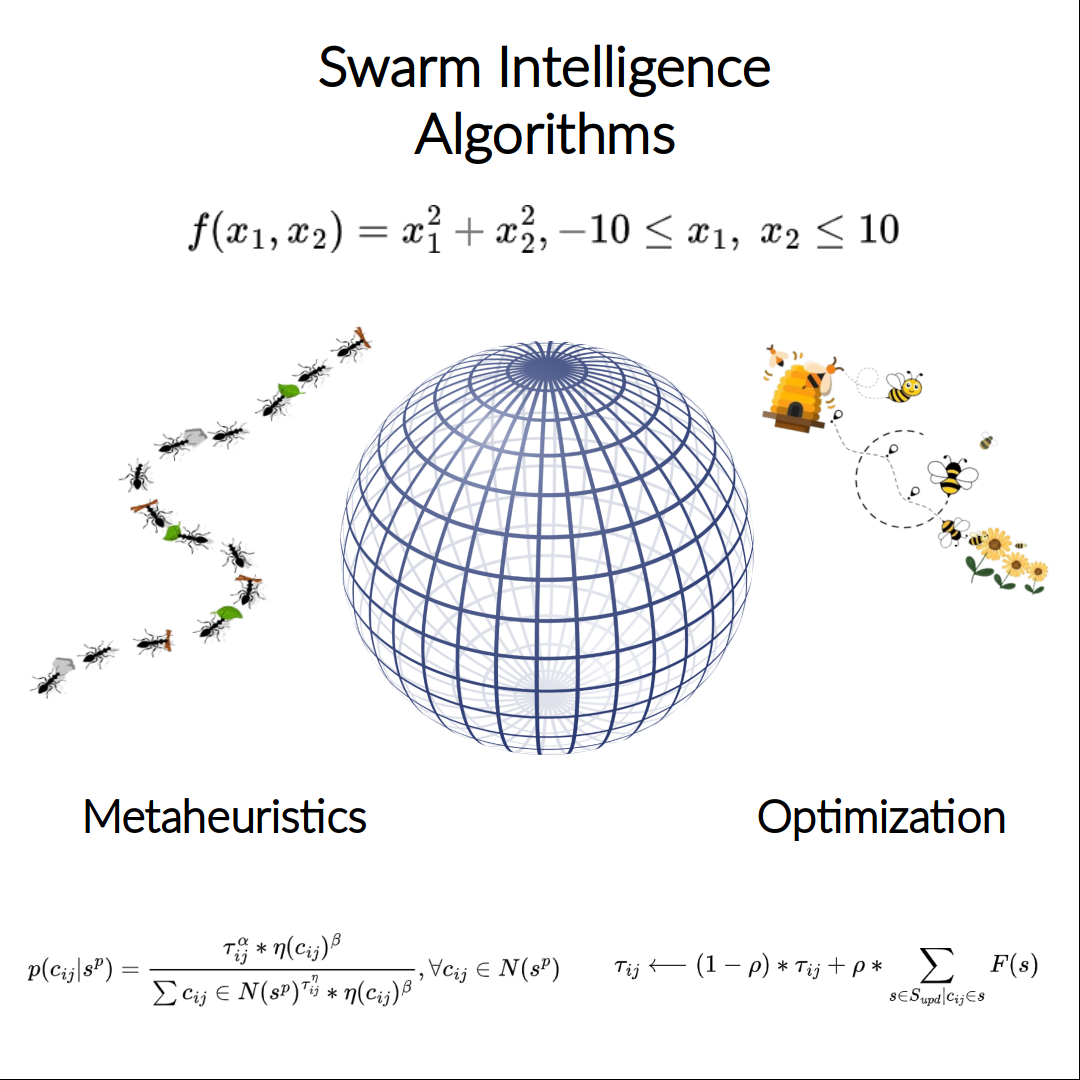Análisis Comparativo de los Algoritmos Basados en Abejas y Hormigas en el Problema de la Esfera
##plugins.themes.bootstrap3.article.main##
Resumen
Dos algoritmos bio-inspirados en la naturaleza se implementaron con el fin de conocer y analizar su comportamiento al buscar una solución a un problema de optimización numérica bien conocido en el estado del arte como problema de la esfera. Asimismo, se buscó detectar aspectos comunes y particulares de ambos algoritmos que derivan en una convergencia prematura. Estos algoritmos son: el Algoritmo de Optimización de Colonia de Hormigas (ACO) y Colonia Artificial de Abejas (ABC). Ambos pertenecen al grupo de Algoritmos de Inteligencia Colectiva, los cuales simulan el comportamiento colaborativo de ciertas especies simples e inteligentes. ACO y ABC son escasamente utilizados debido a su poca popularidad en la solución de problemas de optimización numérica puesto que en un principio fueron desarrollados para problemas combinatorios. Los resultados de cinco experimentos son presentados dando como mejor algoritmo a ACO para el problema de la esfera.
Descargas
Descargas
Detalles del artículo
Citas
Abbass, H. A. (2001). Mbo: marriage in honey bees optimization-a haplometrosis polygynous swarming approach. In Proceedings of the 2001 Congress on Evolutionary Computation (IEEE Cat. No.01TH8546), volume 1, pages 207-214 vol. 1.
Arito, F. L. A. (2010). Algoritmos de optimización basados en colonias de hormigas aplicados al problema de asignación cuadrática y otros problemas relacionados. Master’s thesis, Universidad Nacional de San Luis Facultad de Ciencias Físico-Matemáticas y Naturales Departamento de Informática, San Luis, Argentina.
Baykasoglu, A., Ozbakir, L., and Tapkan, P. (2007). Artificial bee colony algorithm and its application to generalized assignment problem Swarm Intelligence, chapter Focus on Ant and Particle Swarm Optimization. Felix T.S. Chan and Manoj Kumar Tiwari. Itech Education and Pub., Vienna, Austria.
Dorigo, M., Maniezzo, V., and Colorni, A. (1996). The Ant System: Optimization by a Colony of Cooperating Agents. IEEE Transactions of Systems, Man and Cybernetics-Part B, 26(1):29-41.
Dorzán, M., Gagliardi, E., Leguizamón, M., and Hernández Peñalver, G. (2012). Approximations on minimum weight triangulations and minimum weight pseudo-triangulations using ant colony optimization metaheuristic. Fundamenta Informaticae, 119(1):1-27.
Eaton, J. W. (2016). GNU Octave. Technical report, Free Software Foundation. Accessed 13-11-2016.
Eiben, A. and Smith, J. E., editors (2003). Introduction to Evolutionary Computing. Natural Computing Series. Springer-Verlag.
Engelbrecht, A. P. (2005). Fundamentals of Computational Swarm Intelligence. John Wiley & Sons.
Gutjahr, W. J. (2008). First steps to the runtime complexity analysis of ant colony optimization. Computers & Operations Research, 35(9):2711 - 2727. Part Special Issue: Bio-inspired Methods in Combinatorial Optimization.
Haddad, O. B. and Mariño, M. A. (2007). Dynamic penalty function as a strategy in solving water resources combinatorial optimization problems with honey-bee mating optimization (HBMO) algorithm. Journal of Hydroinformatics, 9(3):233 - 250.
Ji, J., Pang, W., Zheng, Y., Wang, Z., and Ma, Z. (2015). A novel artificial bee colony based clustering algorithm for categorical data. PloS One, 10(5). e0127125.
Karaboga, D. and Basturk, B. (2007). A powerful and efficient algorithm for numerical function optimization: artificial bee colony (ABC) algorithm. Journal of Global Optimization, 39(3):459-471.
Kennedy, J. and Eberhart, R. (2001). Swarm Intelligence. Morgan Kaufmann, UK.
Leguizamón, G. and Coello Coello, C. A. (2009). Boundary search for constrained numerical optimization problems with an algorithm inspired by the ant colony metaphor. IEEE Transactions on Evolutionary Computation, 13(2):350-368.
Matijaš, V. D., Molnar, G., Čupić, M., Jakobovic, D., and Bašić, B. D. (2010). University course timetabling using ACO: A case study on laboratory exercises. In Knowledge-Based and Intelligent Information and Engineering Systems - 14th International Conference, KES 2010, Cardiff, UK, September 8-10, 2010, Proceedings, Part I, pages 100-110.
Mezura-Montes, E. and Cetina-Domínguez, O. (2012). Empirical analysis of a modified artificial bee colony for constrained numerical optimization. Applied Mathematics and Computation, 218(22):10943 - 10973.
Mezura-Montes, E. and Coello Coello, C. (2011). Constraint-handling in nature-inspired numerical optimization: Past, present and future. Swarm and Evolutionary Computation, 1(4):173-194.
Vega-Alvarado, E., Portilla-Flores, E., noz Hernández, G. M., Mezura-Montes, E., Sepúlveda-Cervantes, G., and Bautista-Camino, P. (2018). A memetic algorithm based on Artificial Bee Colony for optimal synthesis of mechanisms. Revista Internacional de Métodos Numéricos para Cálculo y Diseño en Ingeniería, 34(1):1-18.
Wei, X., Zhang, J., Zhou, D., and Zhang, Q. (2015). Multiswarm particle swarm optimization with transfer of the best particle. Computational Intelligence and Neuroscience, 2015. 904713.




